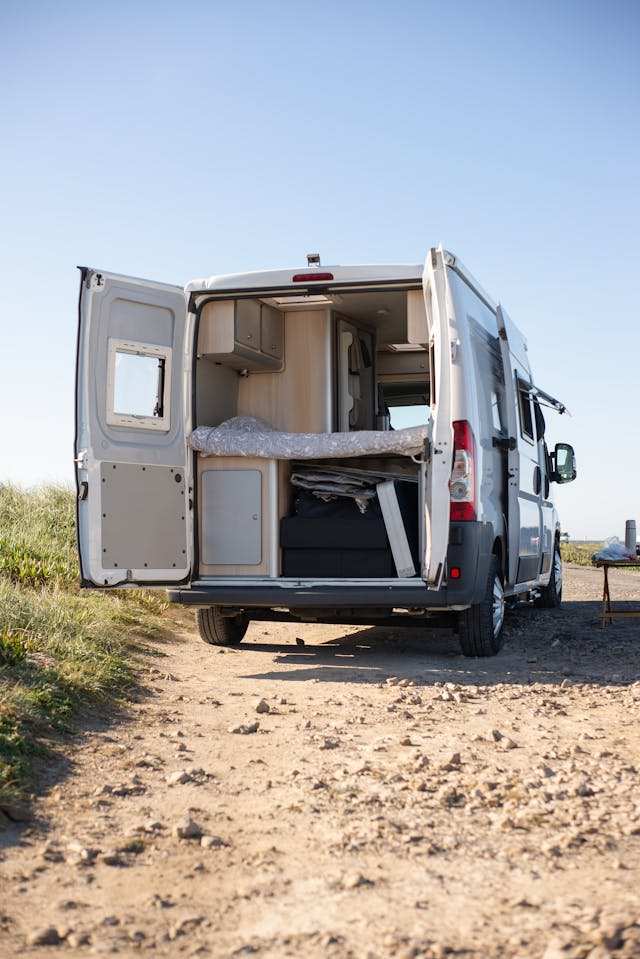If you’ve ever towed a traditional travel trailer, you know that safety chains are a must when using a ball hitch. But when it comes to fifth wheels, the rules are a little different.
So, do fifth wheels require safety chains? No, they don’t. Unlike ball hitch trailers, fifth wheels use a kingpin and fifth-wheel hitch, similar to the system used by semi-trucks. This locking mechanism provides a secure connection, eliminating the need for safety chains.
While fifth wheels are designed for stability and security, other types of trailers—such as bumper-pull travel trailers—do require safety chains. Understanding the differences between these towing setups can help ensure you’re following the correct safety guidelines for your RV.
Why Fifth Wheels Don’t Need Safety Chains
Fifth wheels use a specialized hitching system that sets them apart from traditional ball hitch trailers. Interestingly, the name “fifth wheel” has nothing to do with the number of tires on the vehicle—it’s actually a reference to the unique hitch design.
The fifth-wheel hitch consists of two main components:
- The cargo attachment – This is mounted in the truck bed and features a large, U-shaped coupling mechanism.
- The gooseneck hitch – Extending from underneath the front of the fifth wheel, this connects to the cargo attachment.
These two components are secured by a kingpin, which locks into place to hold everything together. Though it may seem like a small piece of metal, this kingpin system is the same one used in semi-trucks, making it incredibly strong and reliable.
Because of this secure locking system, safety chains are unnecessary for fifth wheels. In contrast, trailers with ball hitches require safety chains as an additional security measure to prevent detachment.
Another advantage of the fifth-wheel hitch design is its greater range of motion. Safety chains on ball hitches can restrict turning angles, sometimes limiting maneuverability. Since fifth wheels don’t use safety chains, they can pivot more freely, allowing for sharper turns, better weight distribution, and a smoother towing experience.
Understanding Safety Chains and Their Role in Towing
Safety chains are exactly what they sound like—durable metal chains designed to provide an extra layer of security when towing an RV. These thick, heavy-duty chains connect the RV to the towing vehicle, ensuring that the trailer remains attached in case the primary hitch fails.
Safety chains are most commonly used with ball hitches, which rely on a simple coupling mechanism. A ball hitch consists of a round metal ball mounted on the back bumper of a truck, which fits into a socket-like coupler on the RV’s hitch. While this setup allows for flexibility in movement, it also comes with a risk—if the coupler isn’t secured properly or if lubrication on the hitch ball causes slipping, the trailer could detach while driving.
This is where safety chains come in. They act as a fail-safe, preventing the trailer from completely separating from the tow vehicle if the hitch fails. Without safety chains, an unsecured trailer could swing wildly, posing a danger to both the driver and other motorists on the road.
Safety chains are attached from the trailer’s front end to designated points on the tow vehicle’s bumper or hitch. Some chains include an additional L-shaped metal bracket that hooks into the RV’s bumper before connecting to the hitch. The chains are then secured with hooks that lock them into place.
Understanding the function of safety chains also highlights a key difference between traditional travel trailers and fifth wheels. Unlike ball hitches, which rest on top of the tow vehicle’s hitch ball, fifth wheel hitches use a locking kingpin system similar to those found on semi-trucks. This secure connection eliminates the need for safety chains since the hitch components are designed to interlock firmly rather than simply rest together.
For anyone towing with a ball hitch, safety chains are a must-have. However, if you’re using a fifth wheel, you can rest easy knowing that your hitch setup is already designed for maximum security without the need for additional chains.
When Are Safety Chains Required?
Now that we’ve established that fifth wheels don’t require safety chains, let’s talk about when they are necessary.
Safety chains are required for any towed RV, trailer, or vehicle that doesn’t use a fifth wheel or big-rig-style hitch. This includes most conventional travel trailers, camping trailers, horse trailers, toy haulers, and even small utility trailers designed to carry ATVs or other equipment. If the trailer connects to the tow vehicle using a ball hitch (also known as a bumper hitch or trailer hitch), safety chains are a must.
It’s important to use safety chains every time you tow, regardless of distance. Whether you’re heading across the country or just driving a few blocks, properly securing your trailer with safety chains can prevent serious accidents. Even a short trip without them could result in a runaway trailer, risking damage to your vehicle, other drivers, or property.
In short, if your RV or trailer relies on a ball hitch, always use safety chains. It’s a simple step that provides crucial backup in case of an unexpected hitch failure.

